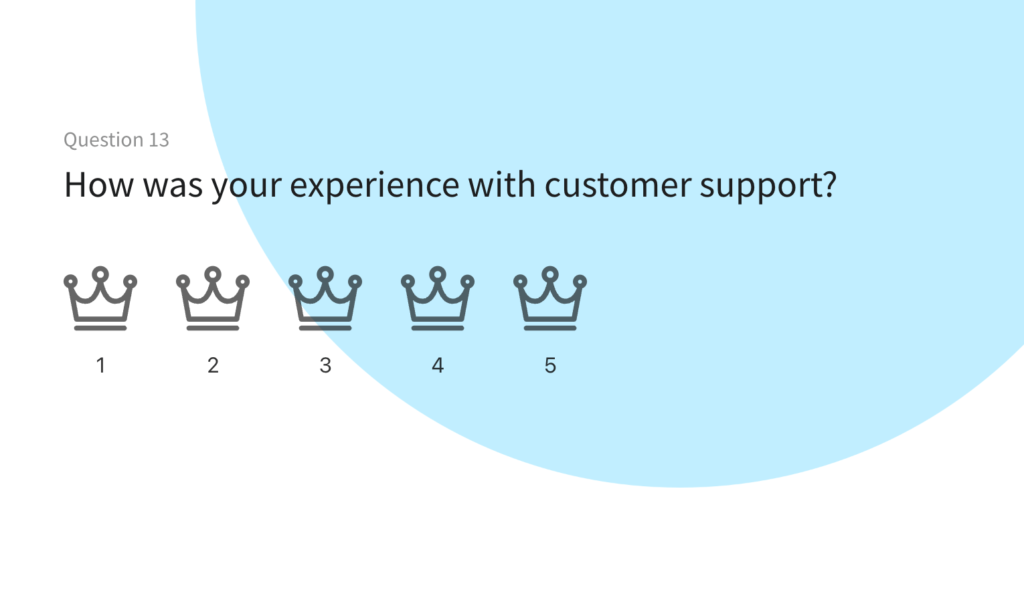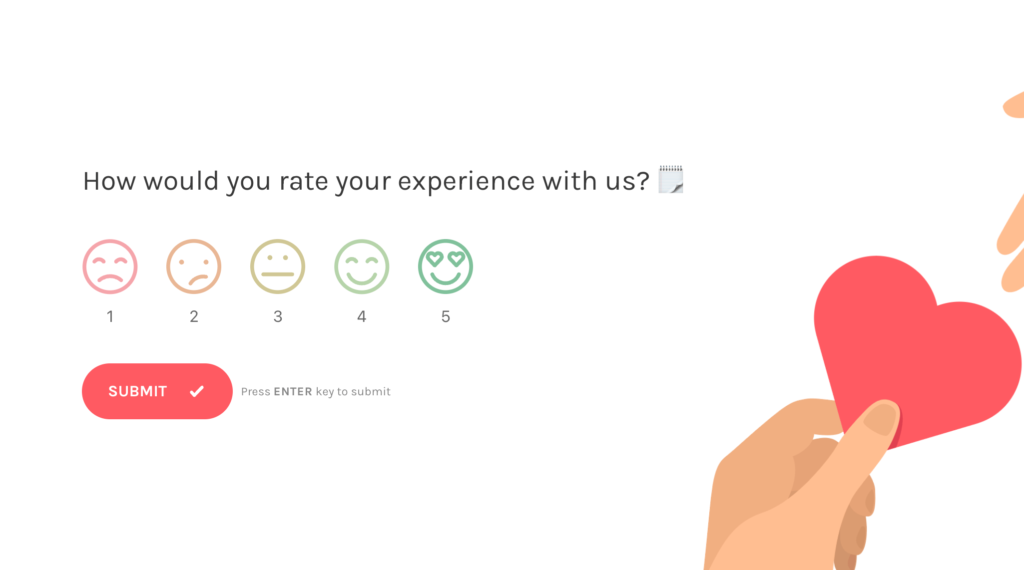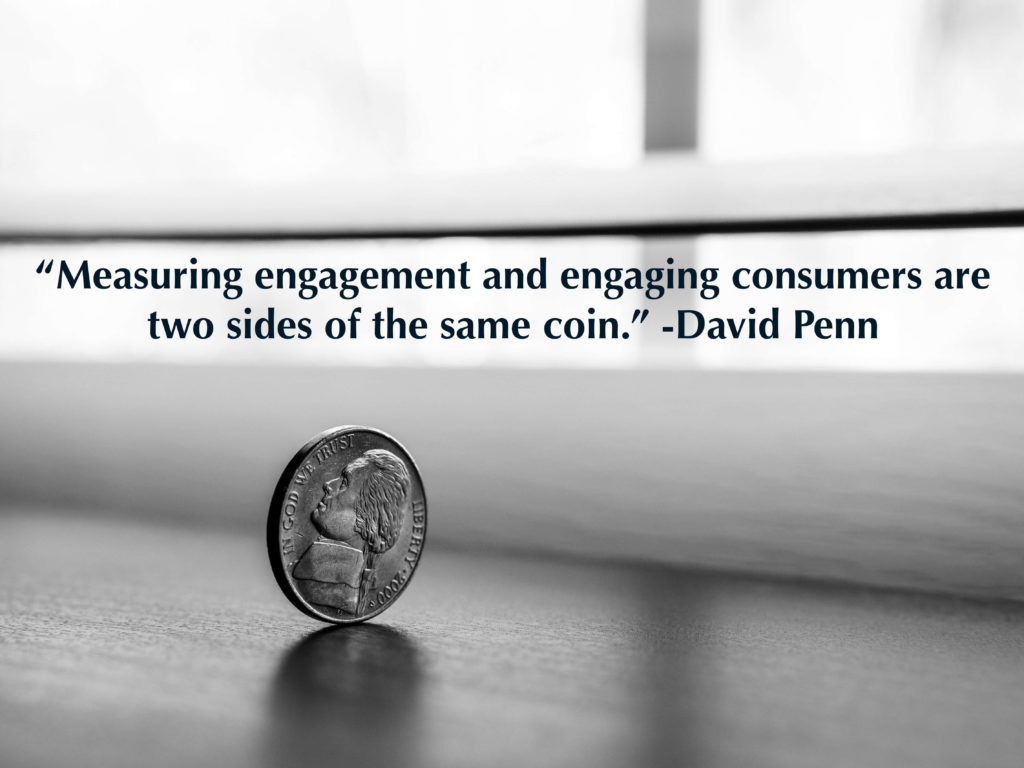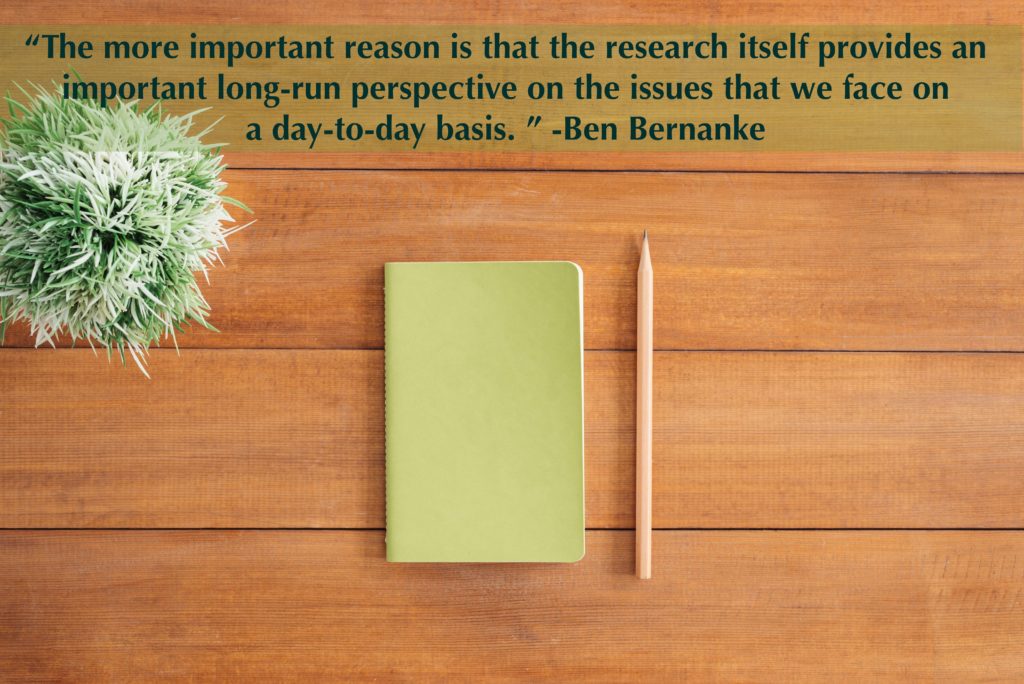7 Reasons Why Likert Scale Survey Is The Next Best Thing Since Sliced Bread

Mathew Maniyamkott
Last Updated: 26 May 2024
14 min read

Have a heart-to-heart conversation with your loved ones if you want to understand about their deep thoughts. But if you want to know what your customers think about you deep down, then use a Likert Scale Survey.
Why? Because when it comes to finding customer’s opinions about a brand, the Likert Scale Survey is one of the best choices.
- What type of study is a Likert Scale?
- What is the main reason to use a Likert scale?
- Example of a Likert scale survey
- When to employ a Likert scale survey?
- Advantages of Likert scale surveys
- How to create a Likert scale survey
What type of study is a Likert Scale?
The Likert questionnaire is usually a 5 or a 7-point scale which is used to measure attitudes and opinions by asking your customers a bunch of questions on a particular topic or by using semantics. They use a fixed choice response statement.
The Likert scale is designed to measure attitudes and opinions. Named after its creator Rensis Likert, it is one of the most reliable ways to measure opinions, attitudes, and behavior of a person towards a particular brand/business/product/service.
This is because the Likert scale gives a much clearer answer than a simple Yes/No result, by giving different degrees of opinion that will make you understand the feedback better.
To get the best results, check out our guide on how to use the Likert rating scale in your own survey.


What is the main reason to use a Likert scale?
We give you not one but 7 reasons why the Likert scale survey is indeed one of the best techniques to gather feedback from your customers.
Reason #1: Best for a one-topic focused survey
Likert scale surveys are best when you use them to ask a series of questions that revolve around one topic. Because when you ask questions that are relevant to a particular topic, it becomes easy to report the data when you want to analyze results from a few questions.
Let’s say you are planning to launch a new product. A mobile app for fitness tracking, maybe?
Before finalizing the features and design, you want to gather feedback from potential users about their preferences and priorities.
To do this, you can create a survey asking participants to rate various aspects of the app, such as user interface, tracking accuracy, available features, and pricing options. But again, it is necessary to use conversational forms. Why? Because old, boring long surveys usually end up being abandoned.
No need to fret! This is where pre-designed survey templates that are tailored to your needs come into the picture. You can perhaps try using SurveySparrow’s library. There is not one but over 1000 customizable templates to streamline your survey creation process.
If you are in a hurry, feel free to use this sample template and make it your own. If you are in the mood to explore, jump right ahead and build your first survey from scratch.
Likert Scale Questionnaire Template
Use This TemplateUltimately, you can collate the data to see how satisfied or dissatisfied the customers are with the process.
You can create a free account to try more awesome features, like NPS surveys and customer journey mapping. Oh, and did we mention executive dashboards? Give it a try if you like it!
Now why don’t we move on to the next reason.
Reason #2: Useful in any situation
Likert scale surveys can be used in any situation when you want to get insights from your consumers about their feeling towards your product. You can use it when you want to see if customers are in agreement with your service. This is one of the most common instances for which a Likert scale survey is used.
The Likert type scale also widely used when you want to see if your customers would recommend your product to someone else.
“Please rate your level of satisfaction with our service” is another statement type where Likert scale makes the most sense to use. The satisfaction-based question is used when you want to get an opinion from your customers about your service.
You can also ask questions on the importance of the product. This will help unearth what your customers think about a particular product or a feature.
Reason #3: Can be used to measure the intensity
The Likert scale survey is extremely useful when you want to measure the intensity of opinion.
For example, when you ask a customer if they liked the product, the answer will be usually binary: a yes or a no.
However, when you ask the customer how much they like a product or did not like it at all, or liked somewhat, then there is a varying set of options that are available. It also becomes easy to gauge ‘how much’ your customer liked or disliked the product.

Reason #4: Can be used to gauge sentiment
Likert scale surveys are unbelievably effective when you want to get an overall sentiment measurement of a particular topic, experience, or opinion.
Likert type scales can also be used to collect data on factors that contribute to that particular sentiment.
However, Likert scale surveys should not be used to get measurements of disparate subjects or mix different sets of scales as it will create confusion.
Reason #5: Bipolar scale
A Likert scale is bipolar because it captures both extremes of an attitude.
When you use it as an odd-point scale, you can also use it to allow neutral responses.
While the 5-point scale is more common, Likert scales can have more options based on the needs. A 3-point scale would eliminate the need to identify the degree to which respondents are satisfied or unsatisfied.
Reason #6: Easy to understand
More often than not, your respondents would have taken a Likert scale survey at some point in time. Thus, it is easier for them to fill their response.
Moreover, the responses are easier to quantify and can be calculated using mathematical analysis.
Reason #7: Does not force an answer
Since it does not ask for a Yes/No answer from the respondent, it does not force the participant to give a particular answer on a topic that they might not be comfortable dealing with in the first place.
Additionally, a Likert scale questionnaire allows them to respond to a degree of agreement thus making it easier for the respondent.
Bonus: Likert surveys are also quick, efficient and are an inexpensive method of data collection.

Example of a Likert scale survey
How satisfied are you with the services at our salon?
- Very satisfied
- Somewhat satisfied
- Neither satisfied nor dissatisfied
- Somewhat dissatisfied
- Very dissatisfied
The user can choose to be neutral by replying with a ‘neither satisfied nor dissatisfied’. And if they are just satisfied, they can reply with a ‘somewhat satisfied’. To show that they are extremely satisfied, they can choose ‘very satisfied’.
The same goes for negative experiences too. This level of clarity is rarely given by other survey methods.
When to employ a Likert scale survey?
There are different types of survey questions like multiple choice questions, open-ended questions, demographic questions, matrix questions and more. When do you choose a Likert scale survey? Likert scale surveys are used when you need to understand what your customers think about you deep down.
Here is when you can use Likert scale surveys:
- When you want to know what people think about your new product
- When you want to understand the experience of your customers on using your product
- To know about the customer service team’s service
- When you want to know what customers think about their order delivery
- When you want to ask webinar attendees what they liked about it
These are some of the places in which you can use the Likert scale survey. Anytime you want to measure the feelings of your customers towards your brand, Likert scale surveys are the best method to use.
The best thing about Likert scale surveys is that it is easy for the respondents to respond because it does not make the question extremely broad. Neither does it make difficult for the respondent to choose a response.

Advantages of Likert scale surveys
- One of the biggest advantages of Likert scale surveys is that the interpretation of data becomes extremely easy when you use this type of survey
- It is not binary like a ‘Yes’ or ‘No’ type question and it gives a bunch of ranges like numbers from 1 to 5 or a range from ‘low’ to ‘high’ or ‘very satisfied’ to ‘dissatisfied’.
- The respondent might want to say that their experience was extremely negative, but if the only option present was ‘negative’ then you would not be able to understand the level of their experience. The Likert scale gives the option to choose ‘extremely negative’.
- For businesses, the surveys are easy to collect and total scores can be easily calculated.
- Since Likert scale surveys use a scale, the respondents are not forced to give binary responses and can be neutral if they want to.
- Likert scale surveys are easy to create and can be run on all modes of communication making it easy to distribute
How to create a Likert scale survey
You obviously are looking for results from your questionnaires, which is why you are pondering how to create a Likert scale survey. If you are looking to get accurate results, then you need to be extremely precise with regards to wording your questions and the subsequent choices that you offer. Here are our tips on creating the perfect Likert scale survey:
1. Determine what you want to measure
When it comes to the Likert scale, you can’t use it to measure a lot of factors, it works best when you want to know about one thing. For example, you might want to know what your customers think about one feature that you recently introduced.
2. Draft statements
As we have mentioned, the Likert scale is extremely useful when you want to learn one thing for which you need to ask specific questions for what you are trying to measure.
Let’s say you are trying to measure customer satisfaction for a restaurant, Likert scales are best when it comes to it because there are a lot of indicators that you can write down to influence customer satisfaction. Here are some of them: delivery time, information sharing as soon as you make the order, pricing, expectations, perceived quality, the taste of food and so on.
The kind of questions that you need to ask here would be about the experience of the customer with the restaurant. Here are some of the questions that you can ask:
- I like the buying experience that I had with the restaurant (Strongly Agree-Strongly Disagree)
- The variety of options available for a consumer at the restaurant is good (Strongly Agree-Strongly Disagree)
- I liked the taste of the food that I consumed from the restaurant (Strongly Agree-Strongly Disagree)
- The time taken for the food to get delivered to my place was reasonable (Strongly Agree-Strongly Disagree)
3. Add a mix of positive and negative indicators
When you are using a positive statement like “I like the buying experience that I had with the food chain”, make sure you use a statement that describes the same in the negative too.
The negative expression for the above statement would be -“The buying experience at the food chain was terrible” The respondents who agree with the positive statements should disagree with the negative statements and vice versa.
When you get such clear-cut answers, it means that the responses are reliable.

4. Decide on the appropriate response scale
Likert Scale surveys use two types of response scales: semantic scale and number scale. When it comes to using a semantic scale, you might want to choose easy and plain options that is easy to understand in a single glance.
The most commonly used indicators in the semantic scale are: Helpful-Not Helpful, Excellent-Poor, Satisfied-Not Satisfied, Agree-Disagree, Always-Never and so on. However, you need to make sure that you use it at the appropriate place.
Let’s say if the question is “How happy are you with the service”, the accompanying semantic should be Very happy- Not happy and not Very Excellent- Not Excellent. Make sure that the scales you use are not ambitious, try to be as clear as possible.
The other type of response choice is using numbers. Likert usually has an odd number so that they can also input neutral opinions. The most commonly used numbers in Likert scale are 5-point Likert scale and 7-point Likert scale. Anything more than a 7-point scale would be unnecessary.
5. Stay consistent
Make sure that you stay true to the scale you have used in the survey.
If you have used a 5-pointer in the Likert scale survey, then ensure that you use the same scale everywhere. When you don’t use consistent scales, you can’t even be sure if you are measuring the same metric with each statement.
6. Keep testing
If you want to create a highly successful Likert Scale survey, then you need to ensure that you test the surveys over and over.
You might want to play with different scales as well as use a different set of words. Find out which ones have the most effective and keep revising and analyzing them.
Use a small pool of respondents and ask them to take the survey and see if they find any anomaly in terms of understanding or in the usage of Likert scale for the survey.

Wrapping Up
We can safely say that Likert scales have a lot of advantages. They are easily one of the most universally understood surveys, and are easy for respondents to take. Additionally, they are effective for the survey creators because they help maximize survey responses.
When you want to focus on a specific topic on which you want to know more, look no further than Likert scale surveys. Using them is the best way to understand your customers’ opinions, feedback, attitudes, and emotions on any topic. They are probably the best survey scaling method.
Get your Likert scale survey right, and you can unearth truckloads of data. This data can be useful in understanding your customers better and in turn it helps in improving your business.

Mathew Maniyamkott
Regular contributor to various magazines. Passionate about entrepreneurship, startups, marketing, and productivity.
Guest Blogger at SurveySparrow
You Might Also Like

Turn every feedback into a growth opportunity
14-day free trial • Cancel Anytime • No Credit Card Required • Need a Demo?




